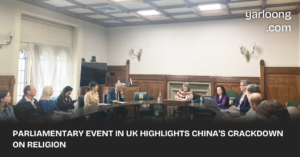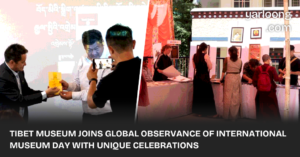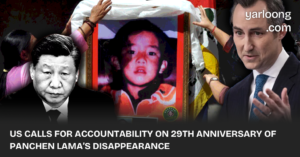
The Chinese Communist Party (CCP) has strengthened its hold on religious sites. With this, the party aims to sever ties with foreign entities and infuse religious teachings with a touch of ‘patriotism’.
New Directives Beginning September
Come September 1, and religious venues in China will experience a sea change. Monasteries, temples, mosques, and churches will need to extend explicit support to the leadership of the Communist Party of China. This falls in line with Xi Jinping’s strategy of “sinicization”, which means adapting religions to fit within the Chinese context.
ALSO READ: Monastic Surveillance: Chinese Authorities Intensify Monitoring of Tibetan Monks
Radio Free Asia highlights these changes, detailing how religious places must now gear their activities to back the Party’s vision. The United Front Work Department’s website clearly states these updated regulations. Their main objective? Ensuring religious venues don’t engage in activities that could harm national security or disrupt societal peace.
Scrutiny of Managers and Activities
Religious venue managers will now undergo a rigorous screening process. Officials will ensure that these managers hold loyalty towards the Communist Party and its set ideologies. This move doesn’t come as a surprise. It’s a part of a broader campaign that aims to “sinicize” religious practices. Indicators of this shift include placing Xi Jinping’s portraits in churches, restricting Christmas celebrations, and even demolishing certain parts of prominent mosques and churches.
ALSO READ: China’s Highest Wind Farm in Tibet Sparks Environmental Concerns
Furthermore, every religious site will need to forward detailed plans of their activities for approval. The aim? To cultivate a sense of nationalistic pride among their followers. They also have to abide by the “sinicization” guidelines and keep extensive records. This includes information on all staff or residents, detailing their religious involvements, social interactions, and ties with any international entity.
Language, Architecture, and Content Guidelines
The Chinese government also offers directives on the content of religious teachings. Such content should align with China’s current scenario and uphold socialist core values. Moreover, the government encourages the use of Mandarin in religious contexts. This initiative isn’t just limited to language. The architecture, artwork, and design at these religious venues should resonate with Chinese traditions and culture.
Restrictions on Funding and Foreign Ties
Believers who aim to crowdfund for constructing or expanding religious sites might face challenges. The new guidelines seem to ban such efforts. Also, there are tight restrictions in place regarding international ties. Religious entities can’t accept roles from foreign religious groups without obtaining prior permission. Accepting donations from abroad? That’s under scrutiny too.
Reactions to the Changes
Shi Daoguo, a Buddhist monk, has voiced his concerns over these changes. He feels that these regulations may hinder free thinking. He goes on to equate the “sinicized” approach with “organizational brainwashing”. Shi Daoguo’s candidness has led him to be under constant observation by local officials.
Chang Chia-lin, a respected scholar at Taiwan’s Tamkang University, perceives this as a clear political maneuver. He believes that this move trumps religious freedom. His prediction? Post September 1, religious venues might face pressure to align with either the State Administration of Religious Affairs or the United Front Work Department.






